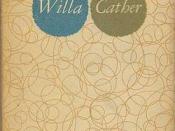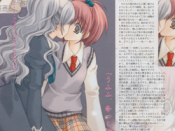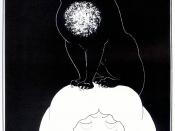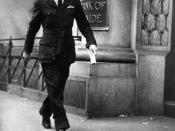The assumption is often made that short stories are weak and lack expression, simply because of their physical size limitations. However, if one were to sit down and read just a few of New Zealand's finest short stories, attitudes would almost certainly change for the better. Maurice Gee for instance, A fine novelist and artistic hero for some, holds many admirable short stories to his name. Gee's famous story 'A Glorious Morning, Comrade' proves to us the inherent potential to which New Zealand writers can live up to in a short story. The main purpose of a short story is to enable the reader to picture in their mind the images which the writer 'paints'. Consequently, more demands are made on the reader.
Since words are strictly limited, characters must be created very quickly. It is for this reason that writers use a 'plunge' technique. The reader is plunged into the plot by being forced to start in the middle of the action.
For instance: 'A Glorious morning, comrade', by Maurice Gee, and 'The hole that Jack dug', by Frank Sargeson. Much less detail is provided to us about the characters, so again we imagine the aspects which are not given to us. Take for example the second paragraph in Frank Sargeson's 'The hole that Jack dug'. The narrator takes less than one paragraph to describe Jack. However, using special wording, the narrator can describe him in much detail using little words to emphasize a few of Jack's unique physical aspects: "The trouble with Jack's grin is that it shows too many teeth." Once Characters are established, a plot or structure will begin to form. Sometimes it will teach a lesson, Sometimes the whole story may seem pointless as is the case with 'The hole that Jack dug'. With a little thought, one can discover the true meaning behind the plot. It may sometimes be hard, but often not impossible. Demands are again placed on the reader to think in all directions, and not just read the written text. Once the story has been read, attention must be focused not only on the concluding paragraphs, but on the concealed idea's which the writer has raised throughout the text. Small hints may be included which might not be picked up from the first examination. The way in which a certain character is described may perhaps raise a key issue, essential in the understanding of the plot. This is indeed the case in 'The hole that Jack Dug'.
The writer may cleverly use sentances of multiple meanings in order to 'cut the fat'. For instance, 'A glorious morning, comrade' raises the thought in the very first paragraph that Mercy, one of Mr Pitt-Rimmer's daughters "Tied her father's scarf in a mean granny knot." This symbolizes Mercy as being cruel and heartless despite her gentle and forgiving name. It also denotes that Mr Pitt-Rimmer is lonely and aware of the resentments that run through his family. A comparison can often be made between two short stories. For instance, 'The hole that Jack Dug' and 'A Glorious morning, Comrade'. The first seems to have no point to it, and the latter informs the reader of the urge cranky old men possess to break out and run their own lives.
In brief, the reader is forced to think with an open mind, which is demanding, especially when an in-depth approach is required for the understanding of the plot. Depending on the writer's aim, demand on the reader will vary significantly, and with careful practices at hand, a firm grasp will be achieved.





